What is Pointing?
Pointing is the process of applying a final coat of cement or lime mortar to the mortar joints of exposed brick masonry or stone masonry to seal them from the elements and improve their aesthetic appeal. It is important to remember that the mortar joints in a building are the only vulnerable areas, even if the building itself is composed of better materials. Since pointing is cost-effective, it may be implemented even in arid regions.
Importance of Pointing:
- It’s useful for stopping water from seeping into the cracks between bricks and causing mortar joints to rot.
- It’s used to finish the joints between bricks or stones in masonry, giving them a strong and dependable bond.
- If pointing is done correctly and tastefully, it will lessen the need for routine maintenance.
- It can be used in several settings, including in dry regions.
The mortar used in pointing:
i) Cement Mortar:
To make cement mortar, combine the right amounts of cement, sand, and water in a large mixing bowl. In pointing, a cement mortar with a 1:3 ratio is typically utilized. For best results, use the mixed mortar within 30 minutes of preparation. It’s utilized for both new and historic building points.
ii) Lime Mortar:
You can make lime mortar by combining fat lime, fine sand, and water in the right proportions. The most common types of lime mortar used for pointing are 1:2 and 1:3. It is used for the construction of old buildings and modern buildings using traditional methods.
The procedure of pointing:
- First, a specialized pointing tool is used to rake out all the mortar joints (15–20 mm) on the masonry face that needs to be pointed. It creates a good key for the new mortar used for the pointing.
- Brushes are used to remove any loose mortar or dust.
- Clean water is used to cleanse the joints and wall surface, leaving the area damp for a few hours.
- After the joints have been prepared, they are filled with appropriate mortar using a tiny trowel. The mortar in the joints has been pressed firmly into place, making a tight seal with the existing mortar in the interior. Joints can be flush, elevated, or sunk depending on the pointing technique. Sides with too much mortar are scraped off.
Pinning can be done any time, even after the job is done. The former variety is more robust and long-lasting, while the latter is tidier and more attractive. Although pointing is inexpensive, it needs to be replaced periodically by repointing because it does not last forever. - When using lime mortar for pointing, the work is maintained moist for roughly three days, while cement mortar requires ten days.
Types of Pointing:
1. Flush Pointing:
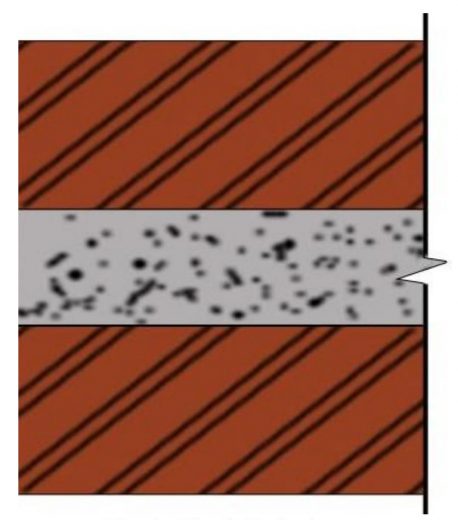
Fig 1: Flush Pointing
Courtesy: gharpedia.com
In this method, the raking joints are filled with mortar, and the masonry units’ edges are finished flush with the mortar. The edges are cut to perfection using a trowel and a straight edge. It’s not pretty at all. On the other hand, Flush pointing is widely employed since it lasts longer than other methods by not allowing dust, water, etc., to accumulate in the spaces between bricks.
2. Keyed Pointing:
In this method, the raking joints are filled with mortar, and the masonry units’ edges are finished flush with the mortar. The edges are cut to perfection using a trowel and a straight edge. It’s not pretty at all. On the other hand, Flush pointing is widely employed since it lasts longer than other methods by not allowing dust, water, etc., to accumulate in the spaces between bricks.
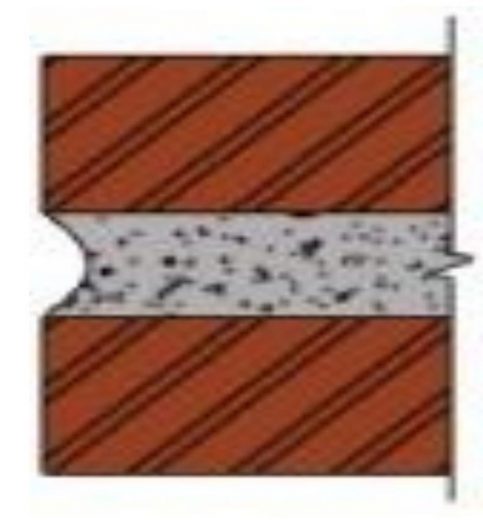
Fig 2: Keyed Pointing
Courtesy: tutorialatipscivil.com
3. Recessed Pointing:
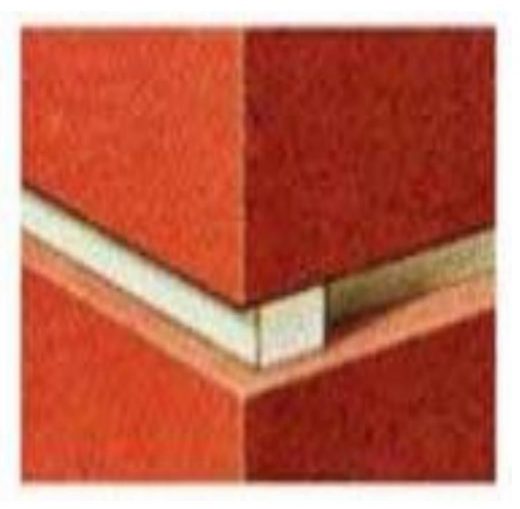
Fig 3: Recessed Pointing
Courtesy: constructionciost.co
In this case, 5mm or more of mortar is pushing back from the edges. With the right tool, the face of the pointing is kept straight while the mortar is being put down. This type has a very good look. Most of the time, these pointing aren’t good for buildings in exposed areas because they don’t easily shed water.
4. Struck Pointing:
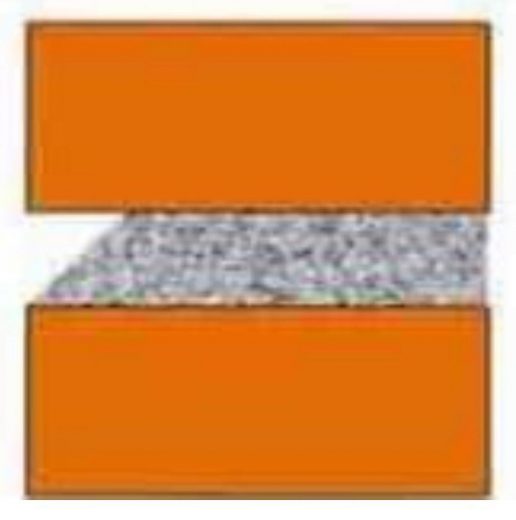
Fig 4: Struck Pointing
Courtesy: civiconcept.com
When the weather is frequently wet and rapid drainage of rain splashes from the brick joints is essential, this style of pointing is employed. Mortar is filled and squeezed within the junction in striking pointing, making it seamless with the brickwork’s outside. A difference of about 10 millimeters is made between the joint’s bottom corner and top border through inward pressure. That way, rain can be deflected away from the wall joints thanks to the resulting slope.
5. Beaded Pointing:
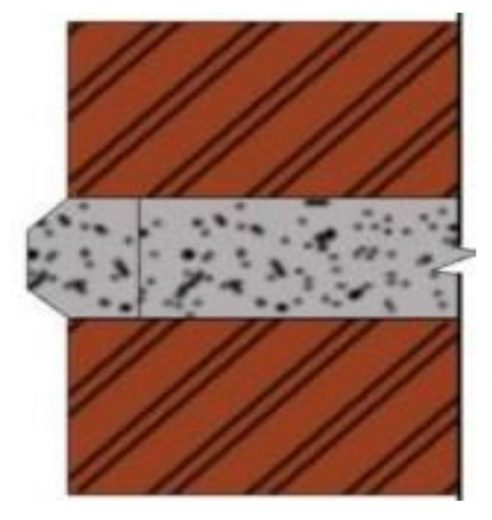
Fig 5: Beaded Pointing
Courtesy: tutorialstipscivil.com
In Beaded Pointing, the mortar is squeezed into a masonry connection, and concave grooves are produced into a junction using a steel tool with a concave shape. Use beaded pointing if you want your mortar joint to look great but be vulnerable to damage.
6. Truck Pointing:
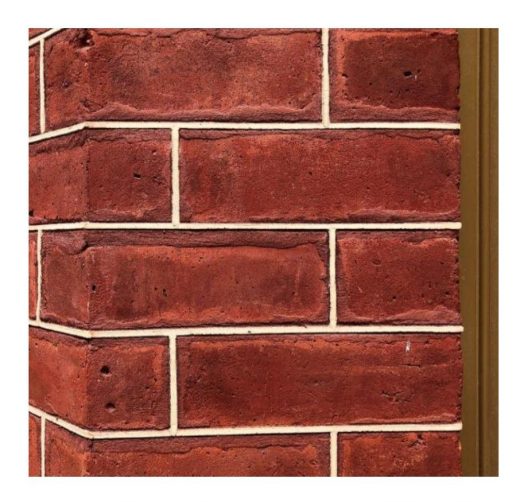
Fig 6: Truck Pointing
Courtesy: traditionalbuilding.com
The mortar is applied to start at the anchored joint and work its way out toward the face. It is cut in the middle of the channel, 5 mm broad and 3 mm deep, while the pressed mortar is green. White cement mass is pushed 3 mm past the joint’s face into this groove. A pointing bastard, also known as a half-bend point, is what you get if you project the mortar.
7. V-Grooved Pointing:
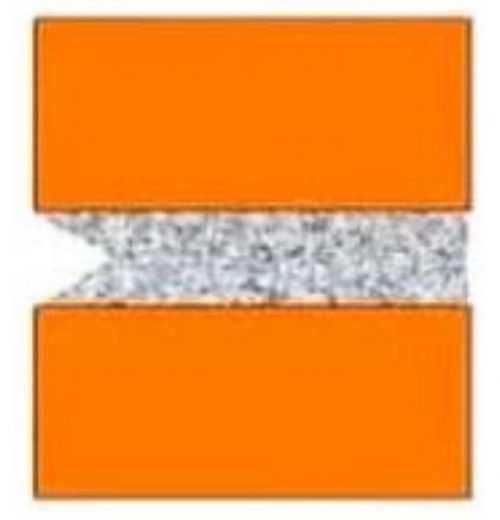
Fig 7: V-Grooved Pointing
Courtesy: civillead.com
It makes a V-shaped groove on the smooth, finished side. Pointing out that it looks old. A V-shaped projection is used to do this.
8. Weathered Pointing:
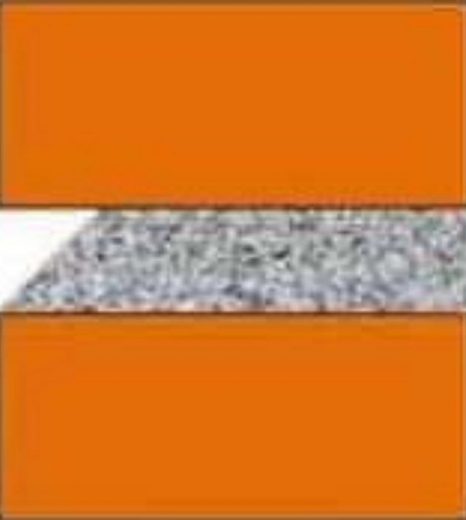
Fig 7: Weather Pointing
Courtesy: civiconcept.com
In weathered pointing, the mortar is pressed into the joint, and then the pointing tool is used to neatly press back the top of the horizontal joints by 3–6 mm while the mortar is still fresh. They appear to slope downward from the apex to the apex of the joint.
Applications of Pointing:
- When combined with cement mortar, it can be used to seal the joints between bricks in a wall.
- The pointing in stone masonry can be strengthened by using stones, leading to a more sturdy and robust building.
- Cracks in buildings can be maintained and repaired through repointing.
- Sometimes, people will aim to make their structure look more stylish.
Advantages of Pointing:
- Fixes the broken joints in old masonry buildings and keeps them strong and long-lasting.
- Protects the mortar joints from rain, frost, snow, air, moisture, and other environmental things.
- Improves the look of masonry walls and other masonry structures by making them look more attractive.
- Pointing cuts down on the cost of maintaining masonry buildings.
Disadvantages of Pointing:
- It can’t be done on the walls from the inside.
- It doesn’t look smooth and plain if it’s not done right.
- Even after pointing, brick or stone masonry can still have flaws.
- It can’t be done in places where it rains a lot.
- If the pointing isn’t done right, it can cause cracks in the stone to look like spider webs.
- Pointing in brick or stone masonry can be hard to paint.
Conclusion:
Pointing is used to maintain buildings by fixing mortar joints between bricks or other masonry materials. As mortar joints age and begin to crack and fall apart, the damaged mortar is chipped out by hand or with a power tool and replaced with new mortar, ideally of the same composition.
References:
1. “Heritage House | What Is Pointing, and What Does It Do?” Heritage House | What Is Pointing, and What Does It Do?, www.heritage-house.org/stuff-about-old-buildings/raking-and-re-pointing/what-is-pointing-and-what-does-it-do.html. Accessed 19 Sept. 2022.
2. “Pointing in Civil Construction – Its Necessity and Procedure.” Pointing in Civil Construction – Its Necessity & Procedure. ~ PARAM VISIONS, 6 Sept. 2020, www.paramvisions.com/2020/09/pointing-in-civil-construction-its.html.
3. “Pointing and Its Significance for the Building Facade – Happho.” Happho, 15 Aug. 2017, happho.com/pointing-significance-for-the-building-facade.
4. “Methods And Types Of Pointing | Pointing Brickwork | Pointing In Wall.” Methods And Types Of Pointing | Pointing Brickwork | Pointing In Wall, www.constructioncost.co/types-of-pointing.html. Accessed 19 Sept. 2022.
5. LCETED. “WHAT IS POINTING? AND TYPES OF POINTING USED IN -Lceted LCETED INSTITUTE FOR CIVIL ENGINEERS.” LCETED INSTITUTE FOR CIVIL ENGINEERS, 9 July 2001, www.lceted.com/2020/07/what-is-pointing-and-types-of-pointing.html.
6. “Pointing Brickwork.” Pointing Brickwork – Designing Buildings, www.designingbuildings.co.uk/wiki/Pointing_brickwork. Accessed 20 Sept. 2022.
If you have a query, you can ask a question here.


